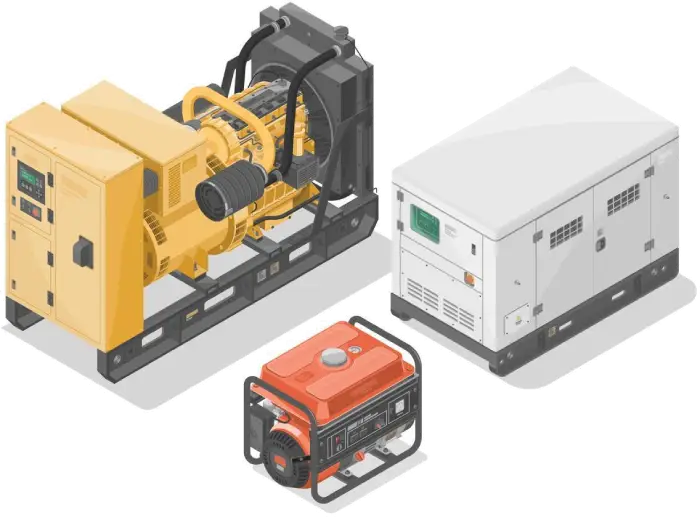Aftersales Mastery: Love a winning strategy for Equipment Manufacturers

Digital Aftersales is a goldmine for Industrial Machine manufacturers
After a phenomenal post covid boom for Industrial OEMs (Original Equipment Manufacturers) they now face a challenging and uncertain future. In order to compete, win and create a long-term sustainable growth trajectory; OEMs are increasing their focus on aftersales lifecycle services—Which includes support, provision of parts, repair, maintenance, upgrades, retrofits, advanced services and digital services for the lifetime of equipment they sold. The ultimate capture of lifetime aftermarket entitlement is achieved by offering the equipment in as-a-service model often termed as Servitization. The appeal of this strategy is simple: services provide stable revenue—and often higher margins—than sales of new equipment. In the short-run it has a potential to improve EBITDA by 18% with a long-term benefits of growing the revenues by multi-folds.

In the Digital Aftersales goldmine, Manufacturers need to know where to dig (Know their Installed base), how much to dig (use data to drive value added services to the customers) and dig efficiently (focus on faster time to market with scaling cost effectively as they grow).
The 4 Industrial companies who have mastered the art of Aftersales
Caterpillar
Caterpillar, a global leader in heavy equipment manufacturing, has a renowned commitment to after-sales service. Since 2000s, Caterpillar and its dealers became less product-focused and more customer outcome-focused to deliver a high standard of solutions. Their emphasis on providing maintenance contracts, genuine spare parts, and comprehensive support has significantly contributed to customer loyalty. Digital solutions became an extension of the off-line sales and services. This resulted in Caterpillar being able to increase the Aftersales entitlement by 2.5x.
Siemens
Siemens, a multinational conglomerate, has successfully integrated after-sales services into its business strategy. Siemens provides comprehensive support, including maintenance, upgrades, and training, ensuring the longevity and optimal performance of its industrial equipment.
Rolls-Royce
Rolls-Royce, a leading manufacturer of aircraft engines and power systems, transformed its business model by shifting from selling products to offering “Power by the Hour” service contracts. This approach ensures that customers pay for engine usage rather than ownership, resulting in improved operational efficiency and reduced downtime. This increased the service attachment from 25% before 2000 to 53.4% in 2012.
Tesla
Tesla, known for its electric vehicles and renewable energy solutions, has demonstrated the importance of after-sales support and customer connection (D2C). Tesla provides over-the-air software updates, ensuring that customers’ vehicles remain technologically advanced. This has not only enhanced the driving experience but also contributed to customer loyalty.
Common Problems that the Industrial companies face (With suggested learning from industrial leaders in the market)

- Manufacturers don’t know their installed base (Who is the customer, where is the equipment, how often is it serviced, when were the parts replaced and when should it be replaced)
Create a strategy to map the Installed base (Manufacturer - Distributor - Customer - Contact Person) using various methods (Product Registrations, QR Codes, IoT connected products, Warranty Registrations, Service contracts)
- Most Industrial Manufacturing companies have an engineering DNA which leads them to do two things: Bias towards build instead of buy (There is a graveyard of engineering led software companies) and Inside out thinking
Collaborate early and partner for non-core activities (Software, Finance, business model etc.) while keeping the focus on your core competency i.e. Innovating physical engineering products. Second, build and Outside in mindset which will help build more customer centric products for today’s age.
- Aftersales is an after thought and feels like a poor child of engineering and sales
Aftersales has a high contribution to margins and can deliver competitive advantage. Gather alignment at the leadership level that focuses on aftersales and create partnerships with all the business functions that aligns to customer outcomes.
- OEMs believe that to truly drive customer delight they lack data, good quality data and the access to data. One of the main reasons for this is a siloed organisation structure with a mix of systems
Bring in the experts who have the DNA and the team to assimilate, connect and manage this data. Often, the data does exists but is available in its own organisation siloes and the magic happens when you bring it together and put it to the right use.
- Used to providing reactive service to the customers and it delivers marginal growth
Drive a strategy for pro-active Services, Parts Sales and Advanced services to achieve high revenue growths but more importantly drives customer satisfaction.
- Manufacturers are able to grow their aftermarket business but with increasing cost. E.g. People, Expensive IoT solutions without a monetization strategy, expensive big IT solutions
Use the right technology which enables you to scale with growth as well as capabilities. Focus on the business outcomes and monetization and partner early.
What are the various Digital Aftersales Lifecycle opportunities and customer expectations:
- A granular view of opportunity at the installed base level
- Finding new Service Approaches (Loyalty programs, Service contracts, Advanced services)
- Increase aftermarket parts coverage by offering Self-service and dealer based accurate parts identification and availability
- Delighting with Customer experience: A customer-friendly redesign increases revenue from existing customers by 10% in 2 years.
- Building new business model: Machine as a service

Master the art of Digital Aftersales : Find the Gold!
- Customer Retention and Loyalty: 83% of consumers are willing to make a repeat purchase from a company that offers excellent after-sales support. For machinery manufacturing businesses, this means establishing a strong bond with customers beyond the initial sale. Prompt maintenance, troubleshooting, and responsive customer service contribute to overall satisfaction, fostering loyalty and repeat business.
- Increased Revenue and Profitability: Top industry review highlights how companies can increase profits by up to 125% through successful after-sales service strategies.
- Enhanced Brand Reputation: Positive after-sales experiences contribute to a strong brand image and positive word-of-mouth marketing. Conversely, poor after-sales service can lead to negative online reviews and damage the brand’s reputation. For example, Caterpillar’s commitment to after-sales support has played a crucial role in establishing it as a trusted global leader in heavy equipment manufacturing.
- Regulatory Compliance and Safety: Opportunity in the mission critical equipment like Heating and pressure vessels, machine with combustible fuels and chemicals and pharmaceuticals industry where manufacturers can prioritize service offering to adhere to global standards.
- Reduce cost to serve: Predictive maintenance, remote monitoring, supply chain optimisation and new technologies like cloud computing and generative AI can significantly reduce the cost of servicing the installed base but driving higher customer satisfaction.

Industrilty’s after-sales app platform and consulting services enables equipment manufacturers to launch, manage and scale their aftersales function, build a special customer link building a customer intimacy, improving superior customer satisfaction, better brand reputation; All of this without being a big and long IT project.
Conclusion
Machinery manufacturing businesses cannot afford to underestimate the importance of after-sales service. It is a strategic imperative that goes beyond mere customer satisfaction—it drives customer loyalty, revenue growth, brand reputation, adaptability to market changes, and compliance with safety standards. By focusing on after-sales support, manufacturers can create a sustainable business model that benefits both customers and the company in the long run. As exemplified by industry leaders like Caterpillar and Siemens, a commitment to after-sales excellence is a key differentiator in the competitive landscape of machinery manufacturing.
– Achint Varia
